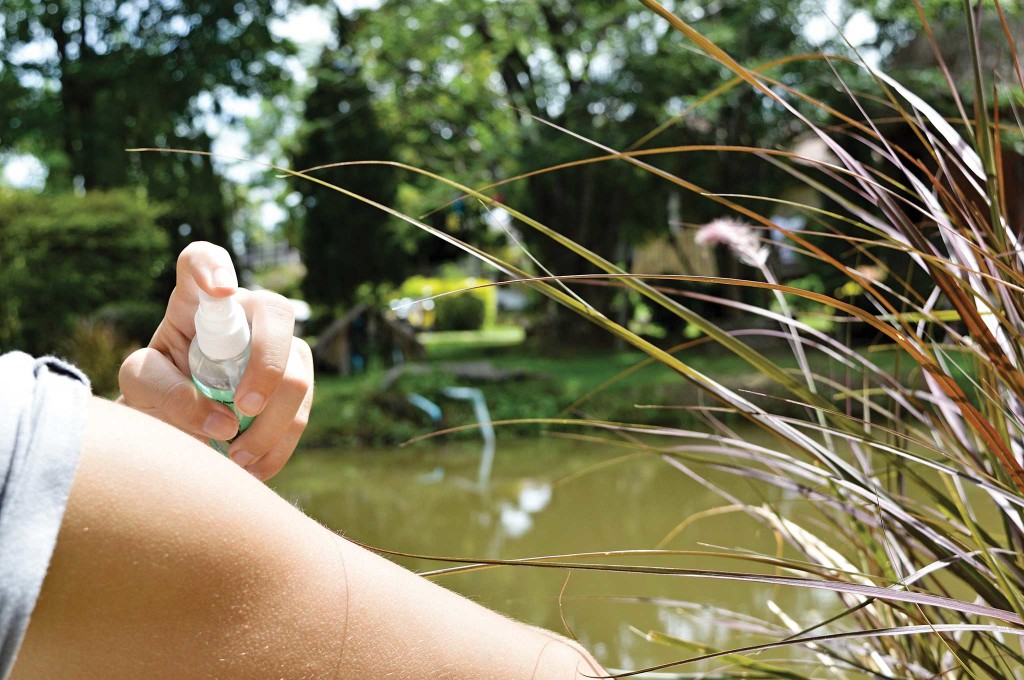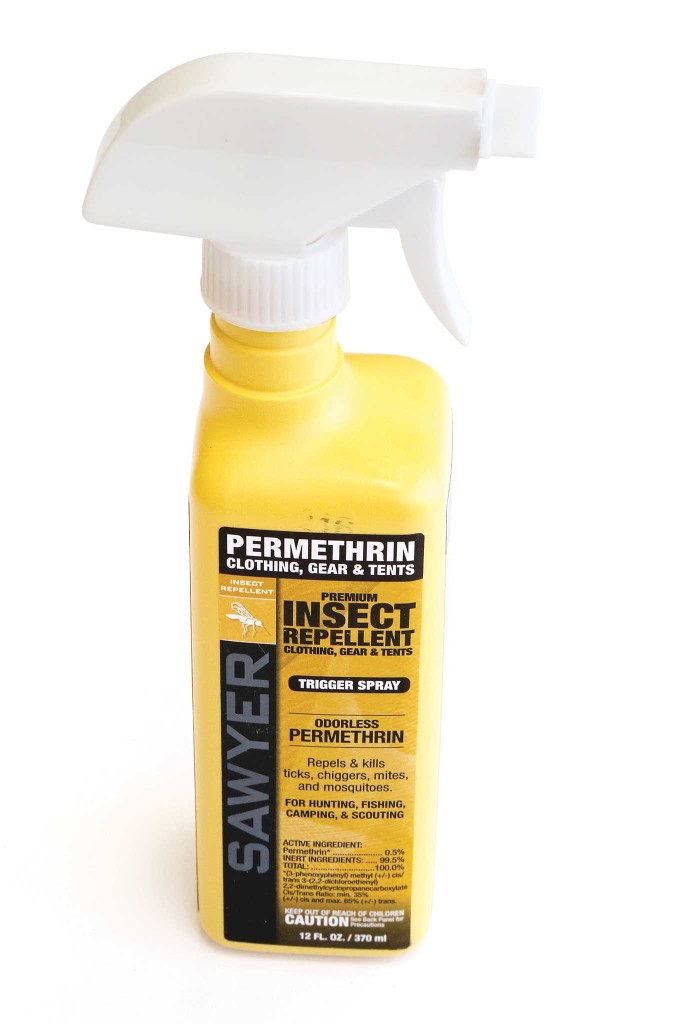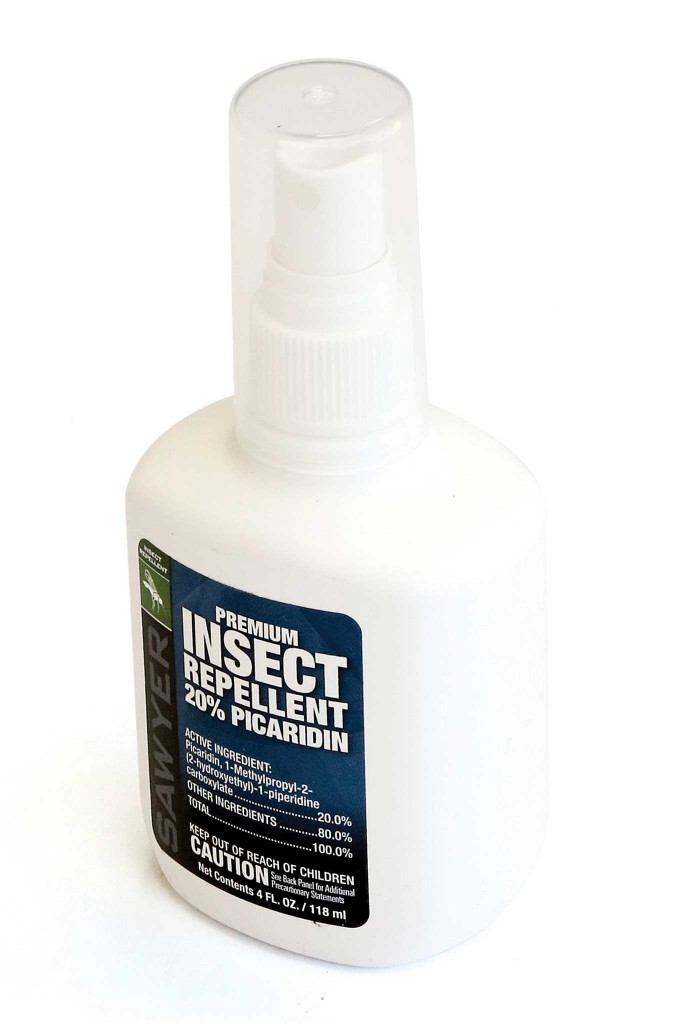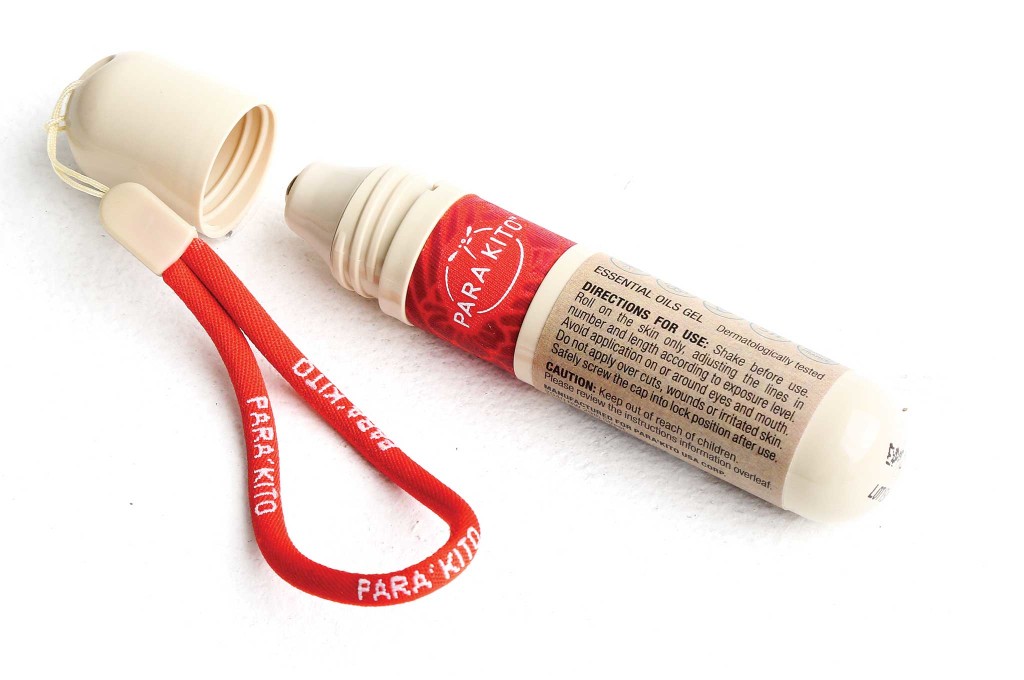RECOIL OFFGRID Preparation Insect Repellent 101
In This Article
Chikungunya. Ever heard of it? Although you might not be familiar with it (much less able to pronounce it), trust us — you don't want it. How about Dengue? Ring any bells? What about Lyme disease, West Nile virus, Yellow fever, Rocky Mountain spotted fever, malaria, and one that's a pretty recent addition to this list of lovely afflictions — Zika. According to the Centers for Disease Control and Prevention (CDC), in 2015 there were 61 symptomatic Zika virus cases reported in the USA and nine cases in U.S. territories. In 2016 those numbers jumped to 5,102 in the States and 36,079 in the territories. What does that tell you?
And here's some more alarming information: You don't even have to be bitten by a mosquito carrying Zika to contract it. It can be passed through sexual contact, blood transfusions, and from infected pregnant mothers to their unborn babies, resulting in birth defects. Also, presently there aren't any specific medicines or vaccines available for Zika, and infected individuals may not even become symptomatic.
Frightening, yes, but you're not completely without countermeasures for preventing Zika and other vector-borne illnesses. In this article, we examine the ins and outs of insect repellents to help you combat disease-carrying pests — which may be in your own backyard right now.

The reason these particular vectors are of great concern is that they're generally parasitic. In other words, they need blood from other animals to survive, so they're constantly looking for hosts to feed off of — this is how their contagions are spread. Humans give off various odors and other attractants that entice these types of vectors. Repellents temporarily block a vector's ability to detect these bodily emissions, reducing their ability to find you.
Insect repellents won't protect against all vectors, many of which aren't insects. Rats fall into this category. On the other hand, rats aren't parasitic, and some insect repellents can be effective against certain insects that bite, but aren't considered vectors, such as ants.
However, don't assume that repellents are automatically effective against anything with more than four legs. Bites and stings from spiders, ants, or wasps are generally a defense mechanism against their habitat being disturbed. If you stumble into a nest of black widows, the chances that they'll be discouraged by your insect repellent are slim to none.
Thankfully, bugs like ants, wasps, bees, spiders, and bed bugs aren't known vectors and don't spread the kinds of illnesses that insect repellents aim to prevent. However, allergic reactions to toxins they carry or bacterial infections can still occur through contact.

Spray repellents provide better coverage than lotions and should be applied whenever in an area where vectors are...
The litany of insect repellent choices on the shelves and online may be mind-boggling. Nowadays there are even products that claim to be natural alternatives with essential oils, electrostatic repellent properties, or spatial repellents that come in the form of clip-on fans/foggers. Where does one start? Are they all equal?
The CDC recommends using topical insect repellents that are registered by the Environmental Protection Agency (EPA), which regulates insect repellents in the United States. The CDC lists five active ingredients with repellency properties that have been studied extensively and shown to be effective:
“We deal a lot with our members traveling globally to places where they want to protect themselves from vector-borne diseases,” says Dr. William Hauptman of International SOS, a company that provides medical assistance, international healthcare, and security service consulting. “We would only recommend, at International SOS, in addition to whatever vaccines or medical prophylaxis may be available, that you use an insect repellent registered by the EPA.”
Topical repellents typically only contain one active ingredient from the above list, and as a general rule, the higher the concentration of the ingredient, the longer your period of protection. There's also typically a ceiling for the effectiveness of each active ingredient.
“With DEET you're going to get greater efficacy with increased percentage, but once you get beyond 50 percent it tends to plateau,” Hauptman says.
An EPA-registered repellent will have a registration number on the container. In 2014, the EPA introduced a Repellency Awareness Graphic (below), similar to the SPF levels you see on sunblock. This label provides information about the duration of the repellent's efficacy. To qualify for an EPA registration and Repellency Awareness Graphic, companies must provide the EPA with data that meets accepted scientific protocol showing the safety and efficacy of the submitted product.
Keep three criteria in mind when selecting an insect repellent: the active ingredient, its level of concentration, and verification that the repellent is EPA registered. Read and follow the directions.
In recent years you may have heard information suggesting that products containing DEET may be toxic, and that alternatives advertised as natural are just as effective at repelling insects without subjecting you to potential negative side effects that synthetic chemicals are assumed to have. While the idea of using natural products may sound good, their effectiveness compared to conventional insect repellents is questionable at best.

Permethrin is an effective insect repellent when applied on clothing or gear, but shouldn't be applied directly...
“DEET has been extensively studied, and I even looked at it again recently,” Hauptman says. “An occasional person may have an allergic reaction to one of the five recommended active ingredients, but you can have an allergic reaction to anything. DEET is confidently felt by the CDC and EPA to be safe.”

Alternative active ingredients recommended by the CDC and EPA, such as picaridin, are available in various...
Because products advertised as natural generally contain chemicals that are considered harmless, they aren't held to the same testing standards; many companies have exploited this exception. A recent article by Consumer Reports found natural repellents to be comparatively inferior to EPA-evaluated-and-registered products.

Research has shown that so-called natural repellents don't offer the same protection as EPA-registered products....
“It's tempting to use something natural, but we always actively discourage our members of that notion because the products that are EPA registered have been shown to be safe at the concentrations sold,” says Hauptman.
He also adds, “None of the electrostatic or sprayer products you can wear that disperse repellent in the ambient area are going to have a degree of efficacy such that you don't also need a topical spray with active ingredient shown to be effective.”
Reapplying throughout the day is advised, particularly if circumstances would diminish the efficacy of the repellent. People often make the mistake of believing that if they apply their repellent once, their coverage will last all day, regardless of their activity. If there's a lot of sweating, heat, and abrasion, the duration will be reduced.
Be mindful of your activity level and activity type — the advertised duration levels aren't guaranteed under strenuous circumstances. In addition to that, you must also examine situations that would put you in contact with vectors.
Will you be outside a lot? Will you be sweating profusely or swimming? If so, you may want to reapply at the halfway point of the product's advertised duration time. If you notice you're getting bitten even before that, it's time to reapply as well.
People may also be concerned about using repellents in conjunction with sunscreen.
“We advise against using combination products and recommend using two separate products,” says Hauptman. “Apply the sunscreen first, and the repellent second. If you use a product with DEET, it may reduce the efficacy of the sunscreen, so you can use a sunscreen with a higher SPF or reapply the sunscreen more frequently.”
While concentrations of certain vector insects and the contagions they carry may vary from region to region, the bottom line is that they can be found everywhere. For example, even if you live in Montana and don't plan on vacationing in any regions rocked by Zika, the Rocky Mountain wood tick is endemic to that state and a known carrier of Rocky Mountain spotted fever and tularemia.
Get proactive and use the CDC's website. It's a great resource to learn about vector alerts in your area (www.cdc.gov/ncezid/dvbd/) and abroad (wwwnc.cdc.gov/travel). Registering with the U.S. Department of State website is another way to stay aware of health bulletins pertaining to vector-related illnesses of concern in a country you intend to visit.
Signing up for memberships with companies like International SOS is an additional measure of coverage, particularly if you fall ill and local health care providers are unavailable or lacking in their resources. See our article “Condition Red” in the Winter 2015 Issue of RECOIL OFFGRID about health considerations while traveling.
As for clothing, if you know you'll be in an infested area, do the following:
Also, be cognizant of the other outdoor conditions that are conducive to the presence of vector insects. Do you own pets? Is there a great deal of vegetation around your home, or places where standing water can accumulate?

Standing water is a common breeding ground for mosquitos. Empty accumulated water and ditch accidental water vessels to...
One can mitigate exposure by trimming tall grass and shrubs, spraying insecticide around one's property, and emptying vessels such as tires or flowerpots that collect stagnant water. If you have ponds on your property, adding fish — which are natural predators — can also help control insect populations. If you have pets, whether they're outdoor or not, check them frequently for signs of ticks or fleas and speak to your veterinarian about effective flea and tick products.
Although many argue that using diatomaceous earth around your property or having plants like lemongrass and lavender may discourage the presence of certain insects, don't assume that whatever measure of protection they provide is substantial enough to obviate the need for topical repellents. Much like citronella candles, their level of repellency is too diluted to have a worthwhile effect.
Speak with your doctor about additional preventive measures. Although there isn't a vaccine for malaria, your health care provider can recommend certain drugs that can reduce the chances of infection. Vaccines for illnesses such as Japanese Encephalitis or Yellow fever (which can both be transmitted through mosquitos) are also available.
Insect-repellent clothing is another method of prevention. Companies such as Insect Shield treat their clothing with permethrin, which has been proven to be effective against vectors and is an EPA-registered repellent. Insect Shield claims that their technology is effective up to 70 washes.
“Other repellents like DEET aren't effective on textiles,” says Janine Robertson, marketing and PR manager for Insect Shield. “They don't adhere and can ruin the fabrics. After 70 washes the fibers tend to diminish, wear away, and there's less available permethrin on the garment, so the clothing can't be retreated after that many washes, but we do have a program where people can send their own clothing and we can treat them before we send it back. Products with a DWR finish can't be treated though.”
Bed netting and window screens should also be a part of your protection efforts. Speak to different manufacturers about the threshold of thread counts per square inch to keep vectors of concern from penetrating the barrier. These can also be used to cover strollers and cribs. Many bed nets come treated with permethrin as well.
While these recommendations may help create an integrated approach to insect repellency, no single method is 100 percent effective in preventing a potential bite from occurring. Topical repellents can be used in conjunction with insect-repellent clothing on exposed skin, although the CDC discourages using repellent under your clothing.
And even if you take malaria pills and are vaccinated against Yellow fever, that doesn't mean you have guaranteed protection against those contagions or can't contract another illness altogether. “While these measures are critical, they are not 100-percent effective, and that the best protective protocol, even for diseases for which vaccination or prophylactic pills are available, still requires a multi-pronged approach, including insect repellent,” says Hauptman. Inoculations should never be relied upon in lieu of topical repellents. Many vectors carry more than one contagion, so even though you think you're protected against one that's endemic to your area, there are still others to watch out for.
Deploy all effective methods to stay as protected as possible, particularly in the hot and humid seasons when bugs tend to be at their greatest population. Putting repellent on your arms won't protect your legs if you don't apply any there. If you're at risk, get in the habit of using repellent. Think of it like applying deodorant, a normal part of your routine. If you don't use it, you'll call attention to yourself in all the wrong ways.
When we talk about insect repellents, and the critters they're effective against, we're referring to “vectors” — living organisms that can transmit infectious diseases between humans or from animals to humans. The best-known examples are:
People often have questions about proper application of insect repellent to themselves and their children. This link can help answer some common questions.
www.cdc.gov/westnile/faq/repellent.html
Yes, there's a right and wrong way to do this. Removing a tick incorrectly may result in mouthparts remaining lodged in your skin or squeezing toxins into your bloodstream. See this link for proper tick removal.
www.cdc.gov/lyme/removal/index.html
Centers for Disease Control and Prevention
www.cdc.gov
Environmental Protection Agency
www.epa.gov
International SOS
www.internationalsos.com
National Center for Biotechnology Information
www.ncbi.nlm.nih.gov
World Health Organization
www.who.int
Don’t miss essential survival insights—sign up for Recoil Offgrid's free newsletter today!
Read articles from the next issue of Recoil Offgrid: Issue 22
Read articles from the previous issue of Recoil Offgrid: Issue 20
Check out our other publications on the web: Recoil | Gun Digest | Blade | RecoilTV | RECOILtv (YouTube)
Editor's Note: This article has been modified from its original version for the web.
 STAY SAFE: Download a Free copy of the OFFGRID Outbreak Issue
STAY SAFE: Download a Free copy of the OFFGRID Outbreak Issue
No Comments